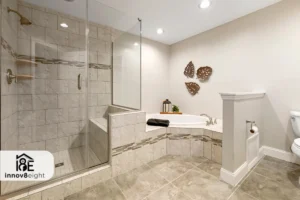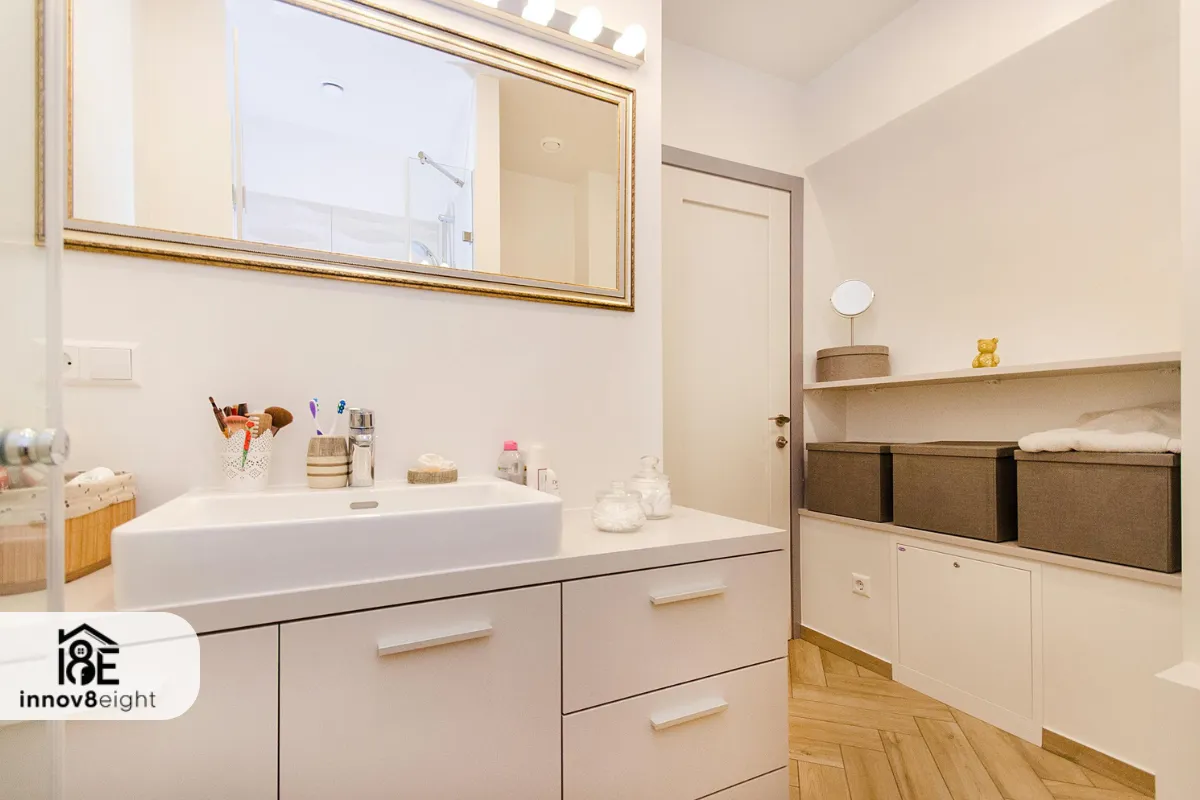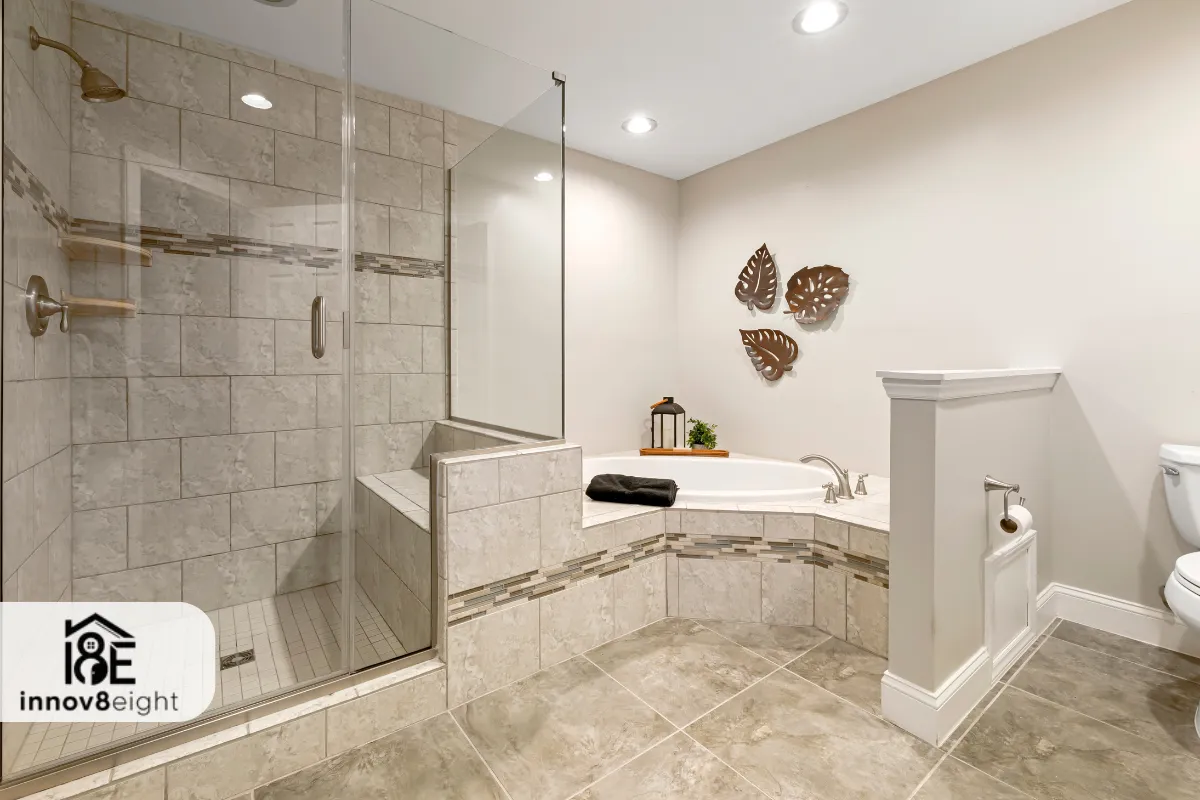Why the Right Monitor Can Transform Your Home Office
Working from home sounds great in theory, no commute, your favorite snacks just a reach away, & you can wear your comfiest clothes. But let’s be honest: hours of staring at the wrong screen can turn even the most relaxed home office into a sore-neck, tired-eyes nightmare. That’s why choosing the best monitors for the home office is more than just a tech decision, it’s about your comfort, productivity, & even your sanity.
The Impact of a Good Monitor
Picture this: you’ve got a monitor that’s too small, colors that look dull, & text that’s hard to read. Every little task suddenly feels like climbing a mountain. Now, imagine a crisp, vibrant screen that’s easy on the eyes, shows everything clearly, & gives you the space to multitask without scrolling like crazy. That’s the power of picking the best monitors for the home office tailored to your needs.
What Makes a Monitor the Best?
So, what makes a monitor “the best”? Size, resolution, panel type, & features like USB-C ports or built-in hubs all matter. You might think bigger is always better, but the sweet spot for most home office setups is usually around 24 to 32 inches. It gives you plenty of room to work without overwhelming your desk.
And resolution? Go for at least 1080p for clear, sharp images, but 1440p or 4K is even better if you want that extra crispness for spreadsheets, design work, or endless Zoom calls.
Ergonomics & Eye Comfort Matter
It’s not just about looks. Ergonomics play a huge role too. A monitor that tilts, swivels, or adjusts in height can save your neck & shoulders from hours of strain. Blue light filters & flicker-free screens also help keep your eyes fresh, even after back-to-back virtual meetings.
Your Monitor = Your Productivity Partner
Finding the best monitors for home office isn’t just about tech specs; it’s about making your workspace a place where you can actually enjoy working. After all, your monitor is more than a screen, it’s your window to productivity, creativity, & sanity in the home office chaos.
Best Monitors by Category
When it comes to picking the best monitors for the home office, one size definitely doesn’t fit all. Your ideal monitor depends on your budget, workspace, & the type of work you do. To make it easier, we’ve broken down the top monitors into four main categories so you can find the perfect fit.
1. Budget-Friendly Monitors
If you’re just starting your home office setup or want a reliable screen without breaking the bank, budget-friendly monitors are a lifesaver. These monitors usually range from $100 to $250 & still offer clear visuals, decent size, & essential features like HDMI ports & adjustable stands.
Why they’re great:
- Compact & easy to fit on small desks
- Energy-efficient
- Perfect for spreadsheets, emails, & video calls
Even on a budget, you can find a monitor that keeps your work comfortable & productive. The trick is to focus on resolution, screen size, & ergonomics, rather than bells & whistles.
2. Mid-Range Monitors
Mid-range monitors cost between $250 & $500 and are perfect if you want a little more oomph. Most of these come with 1440p resolution, vibrant colors, & features like USB-C ports, built-in hubs, & ergonomic stands.
Why they’re great:
- Better clarity for multitasking & detailed work
- Often larger (27 inches+) for extra screen real estate
- Balanced performance & affordability
These monitors are ideal for people who spend 6–8 hours in front of a screen & need the comfort & features to stay productive.
3. High-End Monitors for Professionals
High-end monitors go beyond just looks, they’re built for serious productivity. With 4K resolution, ultra-wide screens, & features like color accuracy for design or video editing, these monitors are top-tier. Prices usually start around $500 & can go well over $1,000.
Why they’re great:
- Stunning visual clarity for detailed work
- Large screen space for multitasking without clutter
- Advanced connectivity options like USB-C, DisplayPort, & built-in speakers
If your job involves lots of graphics, video editing, or multiple applications at once, investing in a high-end monitor is worth every penny.
4. Curved & Ultrawide Monitors
Curved & ultrawide monitors are game-changers for multitaskers. They wrap around your field of vision, reducing eye strain & making it easier to manage multiple windows at once.
Why they’re great:
- Immersive & comfortable viewing experience
- Ideal for multitasking & split-screen productivity
- Stylish addition to your home office
These monitors are perfect for anyone who wants the best monitors for home office experience with both comfort & productivity at the forefront.
Features That Matter Most
When it comes to choosing the best monitors for the home office, it’s not just about price or brand, it’s about the features that make your workday smoother, easier, & more comfortable. Let’s break down what really matters so you can pick a monitor that keeps you productive & happy.
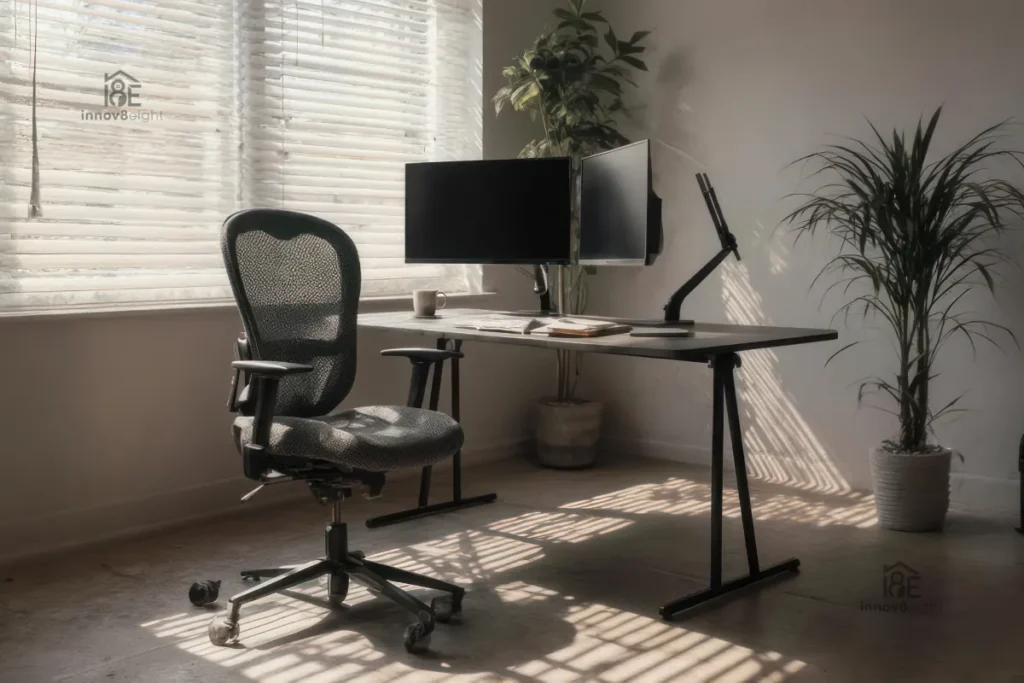
1. Screen Size & Resolution
Screen size & resolution are the first things you’ll notice when picking a monitor. Most home office setups benefit from 24 to 32 inches, giving you enough space to work without overcrowding your desk.
Resolution is just as important. 1080p is fine for basic tasks like emails & web browsing, but 1440p or 4K makes a huge difference if you work with spreadsheets, design projects, or video calls. A sharper screen reduces eye strain & lets you see more at once, making it easier to multitask.
2. Panel Type
Not all screens are created equal. IPS panels are great for vibrant colors & wide viewing angles, while VA panels offer deeper contrast. If your work involves color-sensitive tasks, like graphic design or photo editing, an IPS panel is your best friend.
For general office work, either type works fine, but choosing the right panel ensures your monitor feels comfortable for hours of use.
3. Ergonomics & Adjustability
Your monitor should work for you, not the other way around. Look for height-adjustable stands, tilt & swivel options, & VESA mount compatibility. Proper ergonomics help prevent neck & shoulder pain, especially if you spend 6–8 hours a day at your desk.
Blue light filters & flicker-free technology also protect your eyes, keeping you fresh even during marathon work sessions.
4. Connectivity & Extra Features
Connectivity options can make or break a setup. USB-C ports allow one-cable connections for video, data, & power, while HDMI & DisplayPort are essential for flexibility. Some monitors even have built-in USB hubs, so you can connect keyboards, mice, & other peripherals without extra clutter.
Other features, like built-in speakers or webcams, can be a nice bonus, especially for virtual meetings.
5. Eye Comfort & Productivity Boosters
Lastly, consider features that improve comfort & productivity. Anti-glare screens reduce reflections, ultrawide or curved monitors help with multitasking, & split-screen capabilities make organizing multiple windows a breeze.
By paying attention to these features, you can ensure your monitor doesn’t just look good, it actively helps you work better.
How Monitor Choice Affects Health & Productivity
Choosing the best monitors for home office isn’t just about fancy specs or bigger screens, it can actually affect your health, comfort, & overall productivity. A poor monitor can cause headaches, sore necks, tired eyes, & even reduce your focus. Let’s break down why your screen matters more than you think.
1. Posture & Ergonomics
A monitor that’s too low, too high, or at the wrong angle can wreak havoc on your neck & shoulders. Using an adjustable stand or VESA mount ensures your eyes line up with the top third of the screen. This simple setup prevents slouching & keeps your spine aligned.
Investing in the best monitors for the home office with proper ergonomic features isn’t a luxury, it’s a health necessity.
2. Eye Strain & Fatigue
Staring at a poorly lit or flickering screen all day can cause eye strain, dryness, & headaches. Monitors with blue light filters, anti-glare coatings, & flicker-free technology can protect your eyes while keeping you comfortable for hours.
High-resolution screens also help by reducing pixelation, making text & images easier to read. This means less squinting & more productive time.
3. Mental Focus & Productivity
Believe it or not, the right monitor can improve your focus. Large, clear screens help you manage multiple windows, spreadsheets, & applications without constant resizing or scrolling.
Curved & ultrawide monitors are particularly helpful, they wrap around your field of vision, keeping you immersed in your work & reducing the constant back-and-forth eye movement. Choosing the best monitors for the home office can save you minutes, or even hours each day.
4. Reducing Stress & Discomfort
When your monitor fits your workspace perfectly, your environment feels calmer & less cluttered. You’re not constantly moving your head, squinting at small text, or fighting glare. This small change can have a surprisingly big impact on your mood & work efficiency.
Your monitor isn’t just a tool, it’s part of your home office ecosystem. Picking the right one makes your workspace more enjoyable & keeps you performing at your best.
Multi-Monitor Setups for Home Offices
If you thought one monitor was enough, think again! Many home office warriors are discovering the magic of multi-monitor setups, which can take productivity, comfort, & workflow to a whole new level. Choosing the best monitors for the home office isn’t just about the individual screen, it’s also about how multiple monitors can work together.
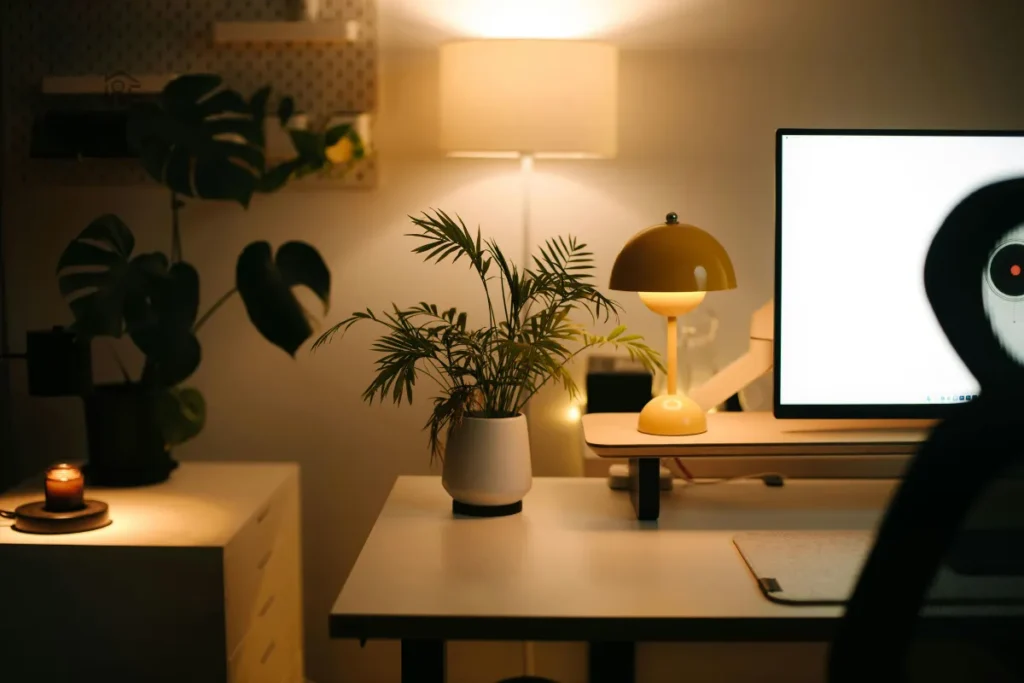
1. Why Go Multi-Monitor?
A dual or triple monitor setup allows you to spread out your work, reducing constant tab switching & window resizing. Imagine having your email on one screen, a spreadsheet on the second, & a video call on the third, all visible at once.
This setup isn’t just convenient, it saves time, reduces frustration, & makes multitasking much smoother.
2. Choosing the Right Monitors
When setting up multiple screens, it’s important to match sizes & resolutions as closely as possible. Mixing drastically different monitors can feel awkward & even cause eye strain.
That’s why investing in the best monitors for the home office with consistent display quality, panel type, & color accuracy makes a huge difference. Ultrawide monitors paired with a standard 24–27 inch monitor can also work, giving you one expansive workspace & one reference screen.
3. Desk & Space Considerations
Multi-monitor setups require careful planning. Make sure your desk can fit two or three screens comfortably, & consider using monitor arms or mounts to free up space. Keeping screens at eye level & aligned properly reduces neck strain & keeps your workspace organized.
A tidy, ergonomic setup ensures that adding more monitors actually improves your comfort & productivity instead of creating clutter.
4. Software & Productivity Tips
Once your monitors are set up, you can take advantage of productivity features:
- Snap & split-screen tools let you arrange multiple windows efficiently
- Virtual desktops can help you separate projects or tasks
- Taskbar management across monitors keeps everything accessible
The right combination of hardware & software makes your best monitors for home office setup feel seamless & natural.
Maintenance Tips for Long-Lasting Performance
Getting the best monitors for the home office is just the first step. To keep your screens performing at their best, a little maintenance goes a long way. With simple habits, you can extend the life of your monitors, protect your investment, & enjoy a smooth working experience every day.
1. Keep Your Screens Clean
Dust, fingerprints, & smudges can make your screen look dull & even affect clarity. Use a soft microfiber cloth & gentle cleaning solution designed for screens. Avoid harsh chemicals or paper towels, which can scratch the display.
Regular cleaning keeps colors bright, text sharp, & your workspace visually appealing.
2. Avoid Overheating
Monitors generate heat, especially larger 4K or ultrawide screens. Ensure your monitor has enough space around it for ventilation. Avoid placing it near heaters, direct sunlight, or electronics that produce extra heat. Proper airflow prevents performance issues & prolongs the lifespan of your best monitors for home office.
3. Update Software & Firmware
Some modern monitors have firmware updates that improve performance, add new features, or fix bugs. Check the manufacturer’s website periodically & update your monitor when necessary. Staying up-to-date ensures you get the most out of your investment.
4. Calibrate for Accuracy
If you use your monitor for detailed work like design or photo editing, regular calibration helps maintain accurate colors & brightness. Many monitors have built-in calibration tools, or you can use free software solutions. Even small adjustments can make a big difference for clarity & comfort.
5. Protect Your Monitor from Physical Damage
Be mindful when moving your monitor or adjusting its stand. Avoid bumping or dropping it, and use cable management tools to prevent strain on ports. If possible, use a surge protector to guard against sudden power spikes, keeping your best monitors for home office safe from electrical damage.
Comparison Chart of Recommended Monitors
Finding the best monitors for the home office can be tricky with so many options available. To make it easier, here’s a simple comparison chart highlighting key features, sizes, & price points for top picks. This way, you can quickly see which monitor fits your needs & budget.
| Category | Monitor | Size | Resolution | Panel Type | Connectivity | Key Features | Price Range |
| Budget-Friendly | Acer R240HY | 24” | 1080p | IPS | HDMI, VGA | Tilt adjustable, anti-glare | $120–$150 |
| Mid-Range | Dell Ultrasharp U2723QE | 27” | 4K | IPS | HDMI, DisplayPort, USB-C | Adjustable stand, USB hub, eye-care features | $350–$450 |
| High-End | LG 32UN880 | 32” | 4K | IPS | HDMI, DisplayPort, USB-C | Ergonomic arm, HDR10, color accurate | $550–$700 |
| Curved & Ultrawide | Samsung Odyssey LC34G55 | 34” | 3440×1440 | VA | HDMI, DisplayPort | Curved screen, immersive, multitasking friendly | $450–$550 |
How to Use This Chart
- Identify your category: Decide whether you want a budget-friendly, mid-range, high-end, or ultrawide monitor.
- Check size & resolution: Make sure it fits your desk & provides clear visuals for your work.
- Look for must-have features: Connectivity options, ergonomics, & eye-care tech matter for comfort & productivity.
- Compare prices: Find the monitor that gives the best value without sacrificing essential features.
This chart makes it easy to compare the best monitors for home office at a glance, saving you time & helping you make a smarter choice.
Final Thoughts
Choosing the best monitors for the home office can transform your workday. Focus on size, resolution, ergonomics, & features that boost comfort & productivity. The right monitor makes multitasking easier, reduces eye strain, & turns your home office into a space you enjoy working in
FAQs
What monitor size is ideal for a home office?
Most home office setups benefit from 24–32 inches. It’s big enough to multitask comfortably but won’t overwhelm your desk.
2. Are ultrawide monitors worth it for productivity?
Absolutely! Ultrawide monitors let you run multiple windows side by side, reducing constant switching & boosting efficiency.
3. Can I use a gaming monitor for home office work?
Yes, but focus on comfort & ergonomics. Some gaming monitors are great for speed & visuals, but make sure they also have eye-care features for long work hours.
4. How do I connect multiple devices to one monitor?
Look for monitors with USB-C, HDMI, DisplayPort, or built-in USB hubs. These allow you to connect laptops, desktops, & peripherals easily.
5. Is 4K resolution necessary for a home office?
Not always, but 4K provides sharper images, more screen real estate, & reduces eye strain. For spreadsheets, design, or multitasking, it’s worth considering.






